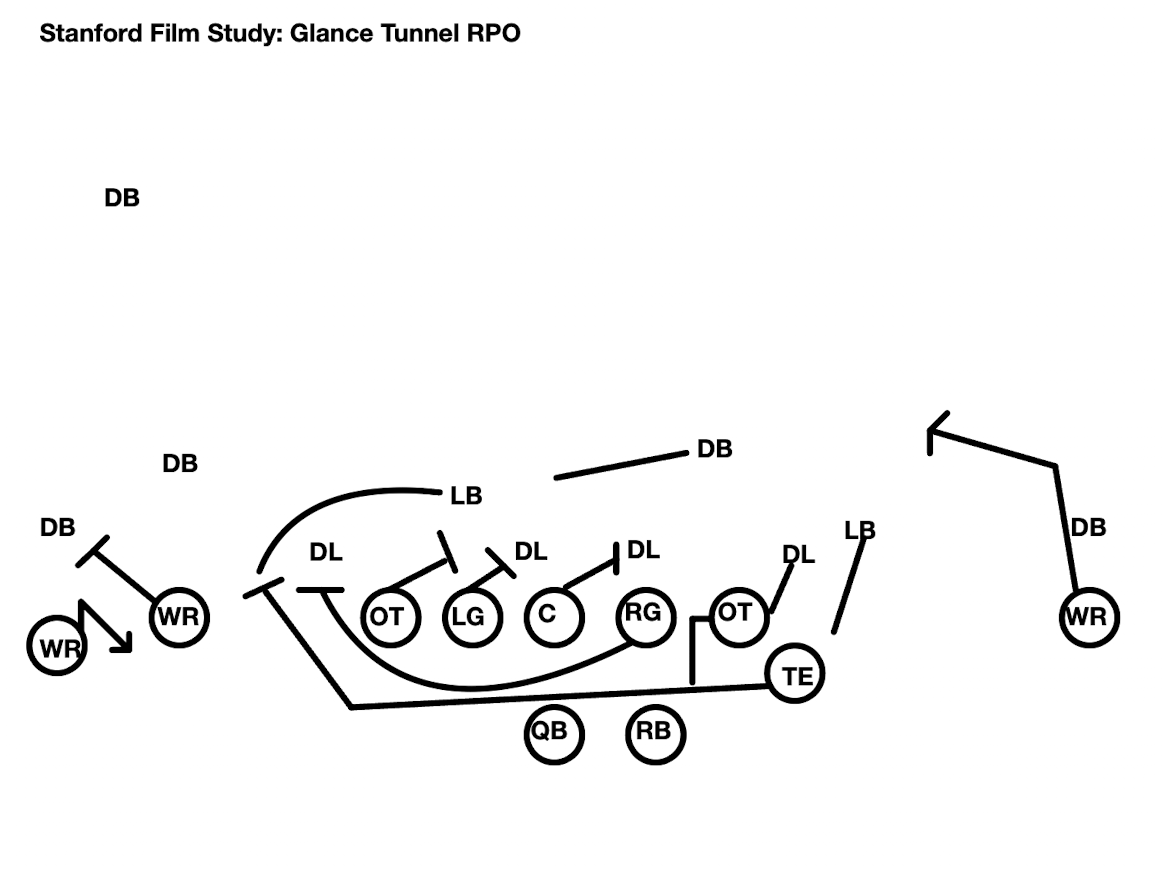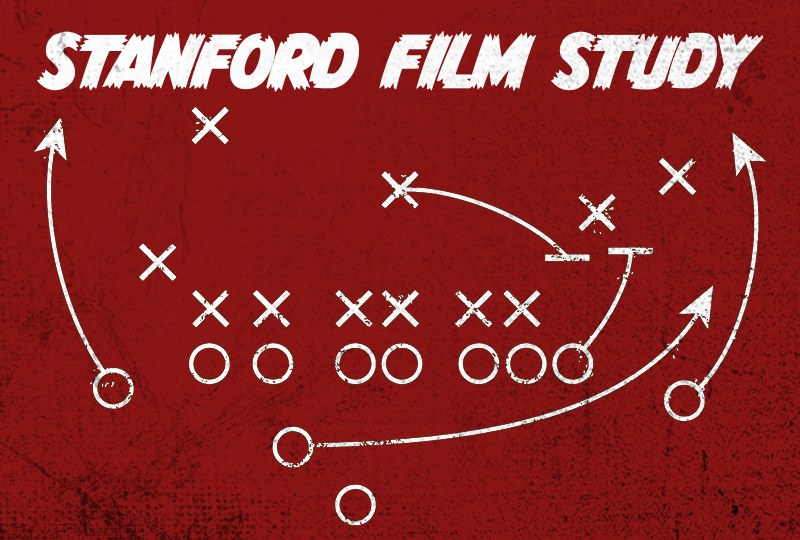Run-pass options (RPOs) have become some of the most popular plays across college football. They allow quarterbacks the option to hand the ball off or throw depending on the coverage the defense shows. During RPOs, the offensive line must run block while the wide receivers run their assigned passing routes. Stanford incorporated an array of RPOs in their offensive game plan against USC. Without further ado, let’s examine how the Cardinal used one of their most effective plays, the Glance Tunnel RPO, against the Trojans.
How does the Glance Tunnel RPO work?
The Glance Tunnel RPO involves the quarterback making pre-snap and post-snap reads to determine the most effective path to gaining yards.
During the pre-snap portion of the play, the quarterback will look to the side with two receivers to see if he has advantageous numbers on the perimeter. If he does, the quarterback will immediately throw the ball out to the flat, where the outside receiver is running a tunnel screen. If not, he’ll move on to the post-snap portion of the RPO.
The post-snap portion attempts to read the activity of linebackers or safeties in one-high and two-high safety coverages. In one-safety looks, the quarterback will see what the outside linebacker does. In two-high safety looks, the quarterback will read the safety with run responsibilities.
Meanwhile, the receiver to the side of the read defender will run a glance route, which is a five-step skinny post that looks similar to a slant. If the read defender decides to come down and play the run, the quarterback will throw the ball to the receiver running the glance route. Instead, if the defender undercuts the glance route, the quarterback will hand the ball off to the running back.

Last Saturday, Stanford ran this concept successfully against USC. During the play, Stanford’s offensive line utilized the power run blocking scheme. Fifth-year wide receiver Michael Wilson runs a glance route, while fifth-year wide receiver Brycen Tremayne runs a tunnel screen to the field side. Junior quarterback Tanner McKee is reading the free safety aligned to the boundary side of the field.
The free safety shifts down to the line of scrimmage in order to play the run. Since the power play is run to the left side of the field, the safety must overcommit if he wants to be in position to help. With the free safety out of position, McKee has a clean window to throw the glance route to Wilson. Wilson is able to gain good separation, and McKee delivers him a perfectly thrown ball. The Cardinal ended up with an 18-yard gain and advantageous field position.
